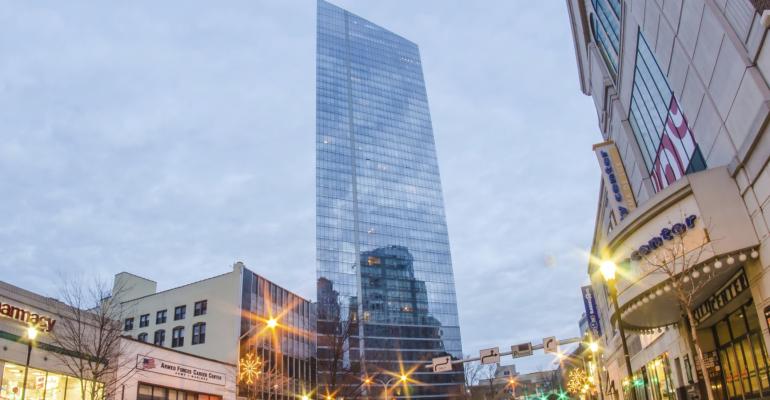Investors are paying more for apartment properties located in the bustling downtown areas of top suburbs.
“The `burbs are getting a little less vanilla,” says Chris Espenshade, senior vice president with commercial real estate services firm JLL.
Apartment buildings located in suburban downtowns that are close to job opportunities, amenities and transit options tend to attract Millennials and older baby boomers. Investors recognize the value of these prime suburban properties and are willing to pay higher-than-average prices for them, relative to the income produced at the properties.
“You get a cap rate premium for being out there in a prime suburban downtown of probably 50 basis points,” says Espenshade.
Big city downtowns are still king
The central business districts (CBDs) of the biggest cities are still the most valued markets by apartment investors. Cap rates on multifamily properties in urban cores are approximately 75 basis points below the national average, according to JLL. Investors paid even more of a premium—by 150 basis points—for properties in big city downtowns earlier in the recovery. As the recovery has gone on that spread has narrowed.
Over the last two years, investors paid cap rates that were 90 basis points lower than the national average for apartment assets located in CBDs of the top 50 core markets in the U.S., according to New York City-based research firm Real Capital Analytics (RCA). That’s double the premium investors paid for apartment properties in urban cores from 2001 to 2009.
“That shift really tells you how much investors value an urban address,” says Jay Parsons, director of analytics and forecasts for MPF Research, a data firm that tracks the multifamily sector.
Strongest suburbs earn a premium
Investors are willing to pay a premium for properties in the strongest suburban downtowns because these places have some similarities to urban CBDs.
“In vibrant suburban areas—‘urban light’ locations with proximity to jobs, transportation, retail and that have upper-income renters—you see fundamentals that more closely resemble those of the urban core,” says Parsons.
The best suburban apartment markets continue to get better. That’s partly because many developers are focusing their energies on building apartments in city downtowns rather than in suburban areas where local resistance to development can be strong. As a result, properties in the suburbs often have less competition from new construction and face less pressure to keep their rents low. “Vibrant suburbs have outperformed on rent growth in recent years and will likely continue to do so,” says Parsons.
Many of these prime suburban downtowns, including Evanston, Ill. and many suburbs in the metro New York area, are connected to the urban core by mass transit options that have been there for decades. Other suburbs benefit from a growing web of mass transit. The number of mass transit commuters rose 10 percent between 2004 and 2014 in the leading transit markets in the West: San Francisco, Seattle, Portland and even Los Angeles, according to JLL.
Prime suburban area are also often the first choice for older apartment renters who have sold single-family homes but don’t want to move too far away and want more space than the average apartment in the urban core.
“You have a lot of empty nesters who are loving luxury suburban apartments,” says Espenshade.

